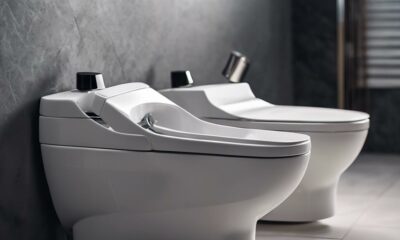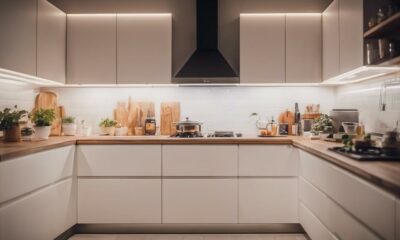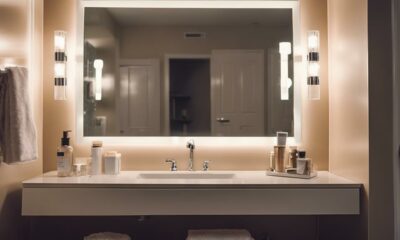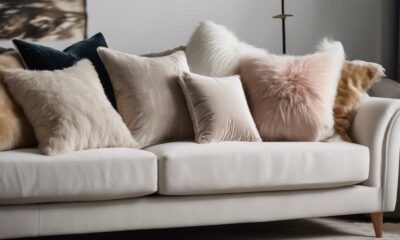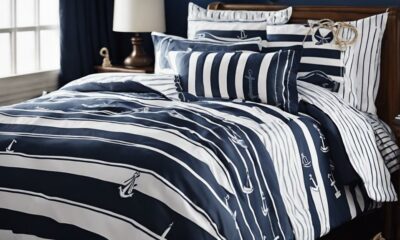Home Decor
DIY Rustic Coat Rack: 5 Easy Steps
Step into the world of DIY and transform your entryway with a rustic coat rack that's both functional and stylish.
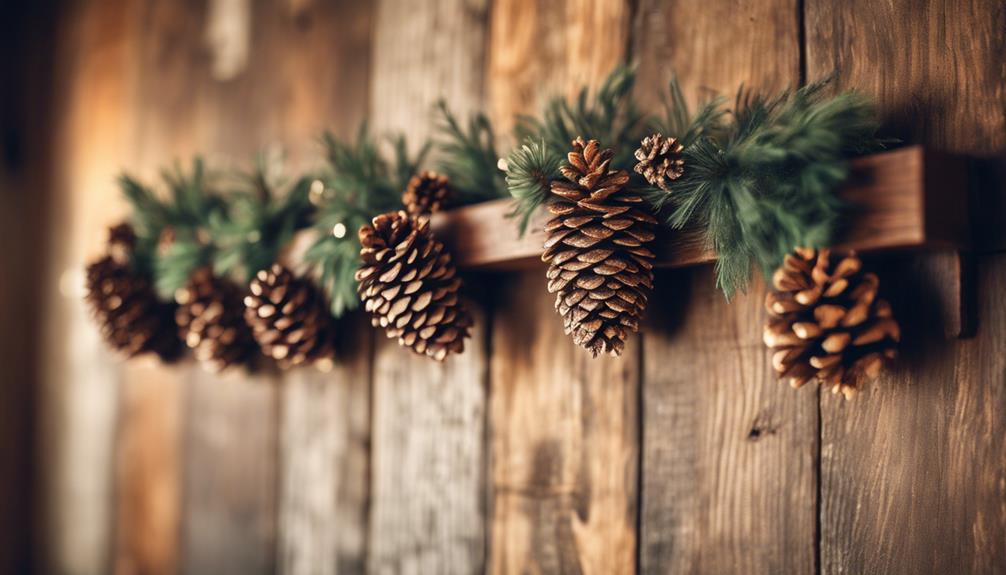
We're excited to create a rustic coat rack that combines farmhouse charm with modern functionality, and the best part is that we can make it in just five easy steps. We'll start by gathering materials like barn wood and black metal farmhouse-style hooks. Next, we'll measure and mark the wood, ensuring accurate dimensions and precise markings. Then, we'll attach the hooks to the wood, securely fastening them in place. After that, we'll assemble and install the rack, making sure it's level and secure. Finally, we'll add some finishing touches, like decorative elements and a small shelf, to create a unique and functional coat rack that's all our own. Now, let's get started and see how our rustic coat rack takes shape!
Key Takeaways
• Gather materials, including barn wood, black metal hooks, a stud finder, power drill, and level, to create a rustic coat rack.
• Measure and mark the wood accurately, deciding on hook spacing and shelf placement, to ensure a precise fit.
• Attach black metal hooks to the wood, pre-drilling holes and spacing them evenly, for a rustic and functional design.
• Assemble and install the rack, securing it to wall studs with screws, and adding wall anchors if necessary, for a sturdy hold.
• Add decorative elements, such as knobs or a shelf, and seal the wood with spray paint to complete the rustic coat rack.
Gather Materials and Tools Needed
As we start constructing our rustic coat rack, the initial vital step is to gather all the necessary materials and tools to guarantee a smooth construction process.
We'll need a few essential items to get started. First, we'll require a piece of barn wood, which can range in price from $5 to $15 per linear foot. We'll also need some black metal farmhouse style hooks, spaced 5-7 hooks evenly, to hang our coats. Additionally, we'll require a stud finder to locate the wall studs, a power drill to make holes, and a level to make sure our coat rack is straight.
To ensure efficient installation, we'll use a cordless screwdriver. It's also important to pre-drill holes in the wood before attaching the hooks to prevent splitting and ensure a neat finish.
With all our materials and tools ready, we can move forward with our DIY project, confident that we've everything needed for a successful and efficient construction process.
Measure and Mark the Wood
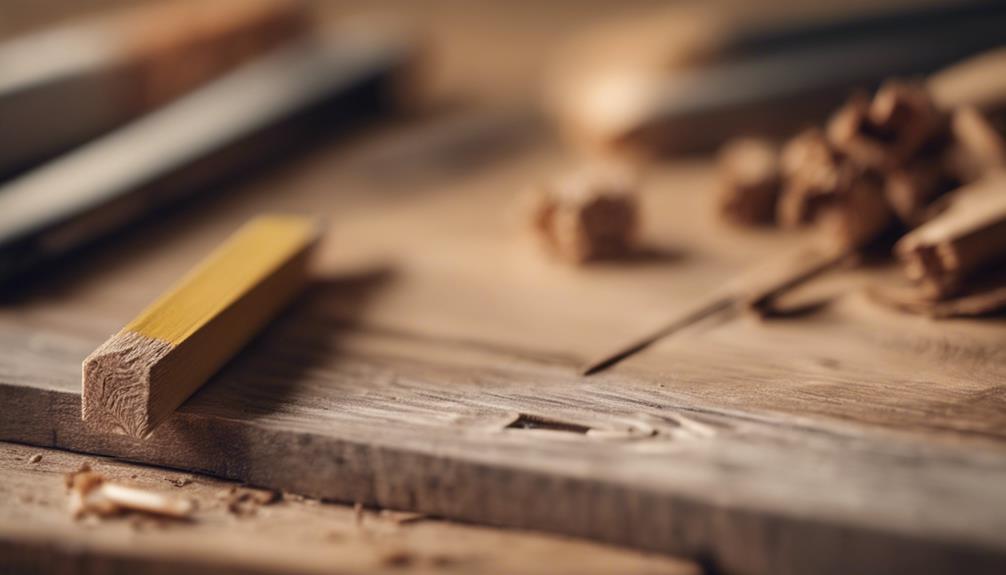
We carefully measure the wood, taking our time to guarantee accurate dimensions for our rustic coat rack. We're building a DIY coat rack, and precision is key to achieving a professional finish.
Using a tape measure, we measure the wood, making sure our coat rack's dimensions are spot on. Next, we mark the wood with a pencil or marker, deciding on the ideal spacing for our hooks or shelf placement. A level comes in handy to make sure our markings are straight and aligned.
We double-check our measurements and markings before moving forward, avoiding any potential mistakes that could throw off our entire project. With our measurements and markings in place, we're ready to start drilling and attaching our hooks. But for now, we take a step back, satisfied that our coat rack's foundation is solid.
Attach Hooks to the Wood
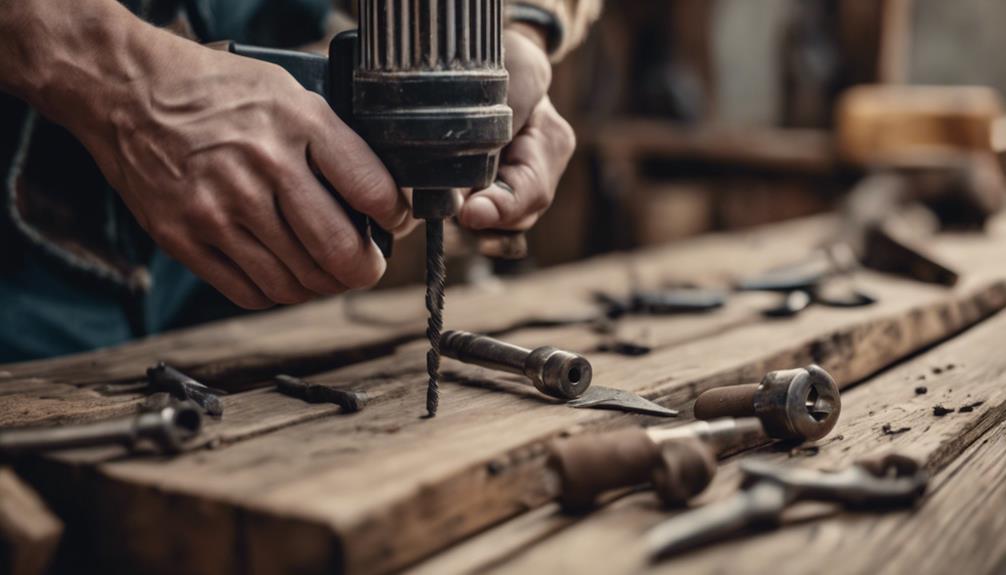
With our measurements and markings in place, we're ready to bring our rustic coat rack to life by attaching the hooks that'll soon be holding our favorite jackets and bags.
To achieve a rustic look, we'll be using black metal farmhouse style hooks. Before installing the hooks, we need to pre-drill holes in the wood to prevent splitting. This step is essential to guarantee a secure and sturdy installation.
Next, we'll space the hooks evenly along the wood, typically 5-7 hooks, depending on the size of our rack. To maintain a neat finish, we'll align the hook installation with the markings on the wood.
Using a cordless screwdriver, we'll efficiently screw the hooks into place. This efficient installation process will make sure our hooks are securely attached to the wood.
With our hooks in place, our rustic coat rack is starting to take shape. The metal hooks will add a touch of industrial chic to our wooden rack, creating a unique and functional piece for our entryway.
Assemble and Install the Rack
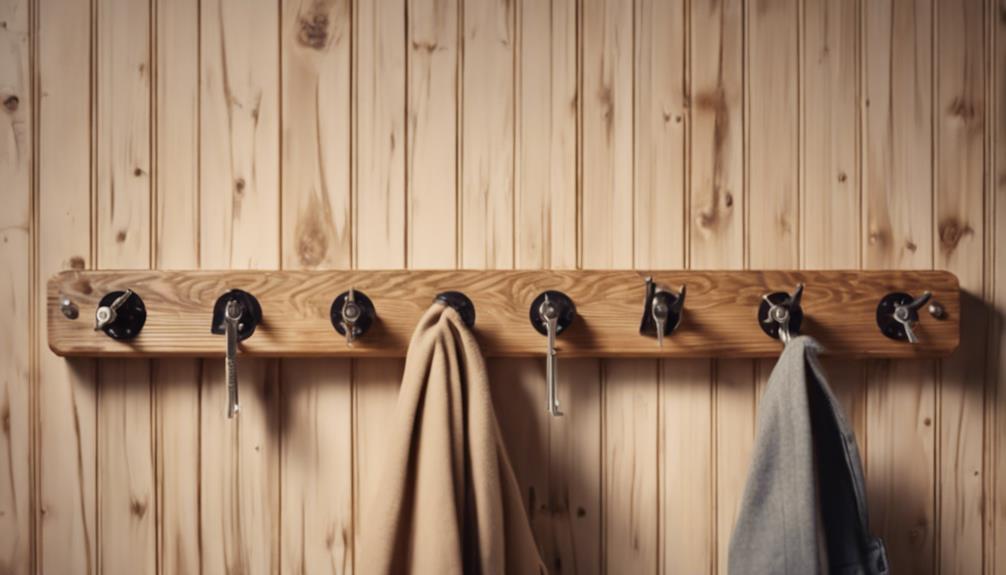
Drilling screws into wall studs, we secure our rustic coat rack, guaranteeing a sturdy installation that can hold the weight of our favorite jackets and bags. As we assemble and install the rack, we're mindful to take into account a few important factors for a successful DIY project.
Here are some key steps to keep in mind:
- Attach securely: Use a drill and screws to fasten the coat rack to wall studs for a strong attachment.
- Level installation: Ensure the rack is flat by using a level during installation to prevent it from tilting.
- Weight considerations: Take into consideration the weight of the rack when choosing screws for mounting to ensure it can hold the desired load.
- Add wall anchors: If studs aren't available, add wall anchors for a strong attachment.
Add Final Touches and Accessories
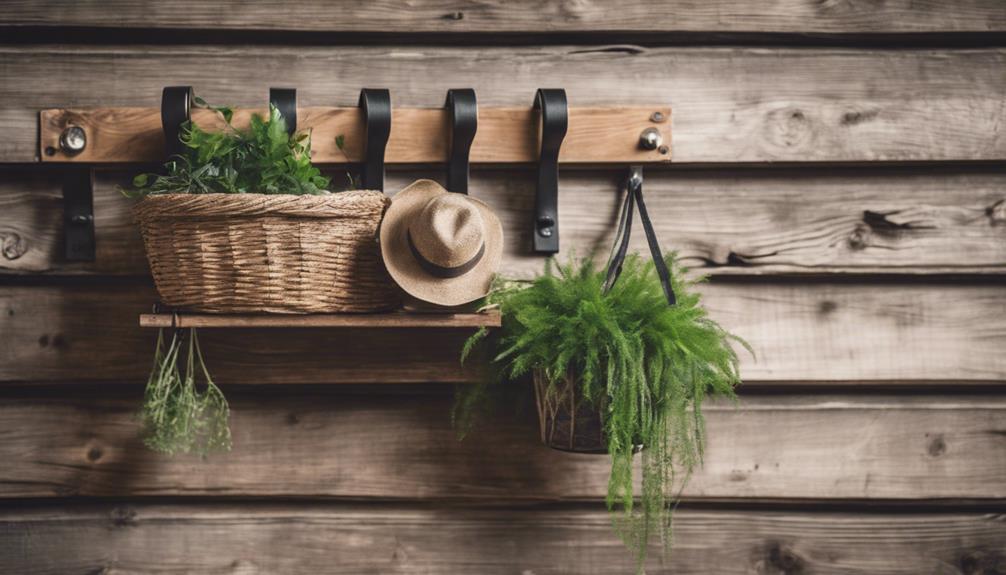
Now that our rustic coat rack is securely in place, let's add some personality to it. We can give our DIY project a touch of Farmhouse Style by incorporating decorative elements. Consider adding decorative hooks or knobs from Hobby Lobby to give it a personalized touch.
We can also attach hooks made from rustic materials like wood or metal to complement the overall aesthetic. A useful addition would be a small shelf above the hooks for added functionality and storage space. To prevent splitting, we can use spray paint to seal the wood before attaching the hooks.
Hang a mirror above the coat rack for a convenient last-minute check before leaving. For extra storage, include baskets or bins underneath for organizing scarves, gloves, or other accessories. Finally, display seasonal decor or artwork around the coat rack to complement the rustic style.
With these final touches, our DIY coat rack is transformed into a functional and stylish piece that adds character to our entryway without breaking the bank or incurring extra cost.
Frequently Asked Questions
How Do You Make a Simple Coat Rack?
We'll show you how to make a simple coat rack!
To get started, decide on the length and material for your rack. Cut the board to size, and sand the edges for a smooth finish.
Stain the board with your preferred color, and attach hooks evenly spaced along the length.
Finally, secure the rack to the wall using wall anchors for stability.
With these easy steps, you'll have a functional and stylish coat rack in no time!
What Wood to Use for a Coat Rack?
When selecting wood for our coat rack, we seek sturdy, stylish options. We fancy wood with flair, like reclaimed barn wood, which flaunts a rugged, rustic charm.
Aged or weathered wood adds character, while durable varieties guarantee our coat rack remains sturdy. We prioritize wood that's both visually appealing and long-lasting, perfect for standing up to the weight of our outerwear.
How to Make Wooden Coat Hooks?
We're excited to begin crafting wooden coat hooks!
To start, we select our preferred wood type, considering the look and durability we want to achieve.
Next, we sand and stain the wood to enhance its appearance and longevity.
Then, we pre-drill holes to prevent splitting before attaching the hooks.
How Do You Make a Coat Rack Out of an Old Door?
We're transforming an old door into a functional work of art!
To make a coat rack out of an old door, we start by giving it a fresh new look with a sand and paint job.
Next, we add hooks or knobs, attaching them securely to the door's panels.
Conclusion
Our rustic coat rack is now ready to hold our jackets, hats, and scarves. But the best part? We got to create it ourselves, and it's uniquely ours.
Now, imagine the rustic charm it'll add to our entryway – and the envy of our friends when they see it. We can't wait to show it off!
Home Decor
What Home Decor Style Do I Like
Kickstart your home decor journey by discovering your unique style with a blend of minimalist, bohemian, modern, or traditional designs – find out more!
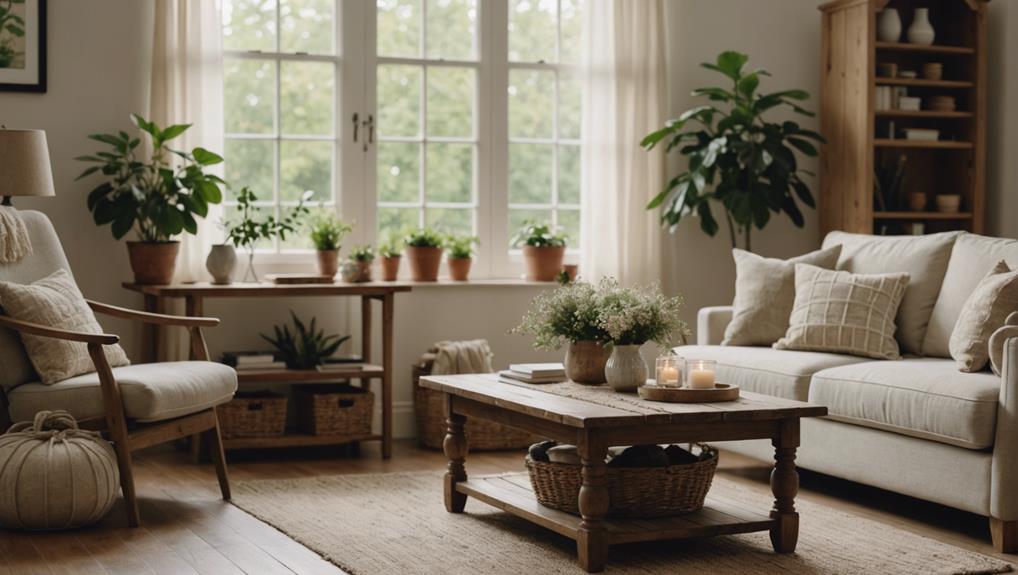
When determining your home decor style, take into account minimalist, bohemian, modern, or traditional designs. Consider cozy, chic, or eclectic vibes. Think about whether you prefer clean lines, neutral colors, or vibrant patterns. Find inspiration from places where you feel comfortable. Coordinate your color palette, embrace tranquility with minimalism, bring warmth with natural elements like wood and plants, and choose functional furniture that fits your space. Pick decor pieces that add texture and color. Create a cozy atmosphere with warm colors, soft lighting, and personal touches. Finding a balance between trends and timelessness can give your space a unique look that reflects your style. Learn how to show off your individual style.
Key Takeaways
- Consider minimalist, bohemian, modern, or traditional styles for inspiration.
- Identify colors and textures that resonate with your desired ambiance.
- Explore cozy, chic, or eclectic preferences for a personalized touch.
- Assess if you prefer clean lines and neutral tones or vibrant patterns.
- Look for unique decor elements that reflect your personality and style.
Starting Point: Reflect on Your Preferences
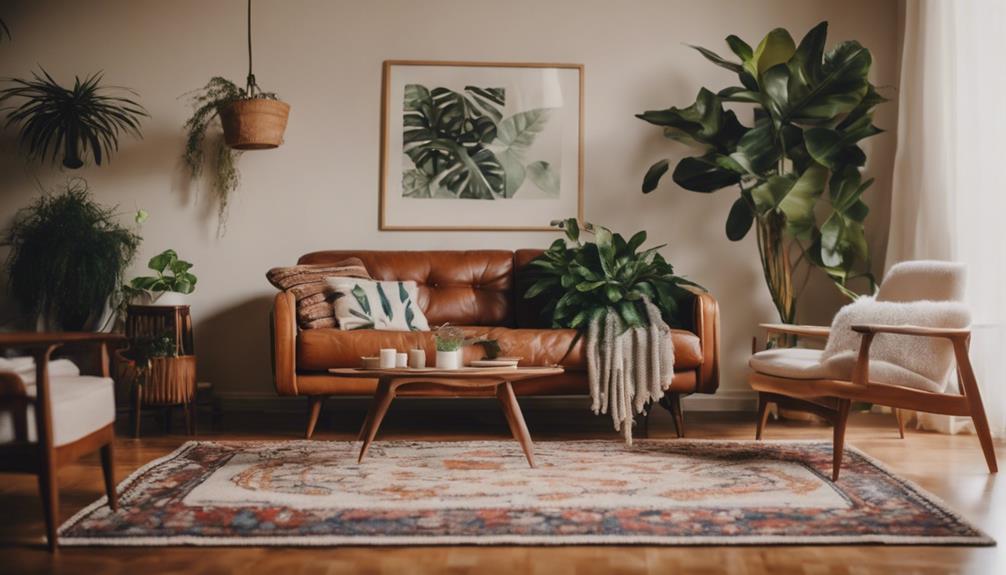
Reflect on your favorite colors, patterns, and textures in home decor to discover your unique style. When determining your home decor style, consider if you lean towards minimalist, bohemian, modern, or traditional design styles.
Your preferences in ambiance, such as cozy, chic, or eclectic, can also guide you towards a cohesive design that resonates with you. Think about how you explore different design elements like furniture, lighting, and artwork.
Do you prefer clean lines and neutral colors for a modern look, or are you drawn to vibrant patterns and textures for a bohemian feel? To investigate further into your decor style, you can take a home decor style quiz or gather inspiration from spaces where you feel comfortable and happy.
Assessing Your Color Palette
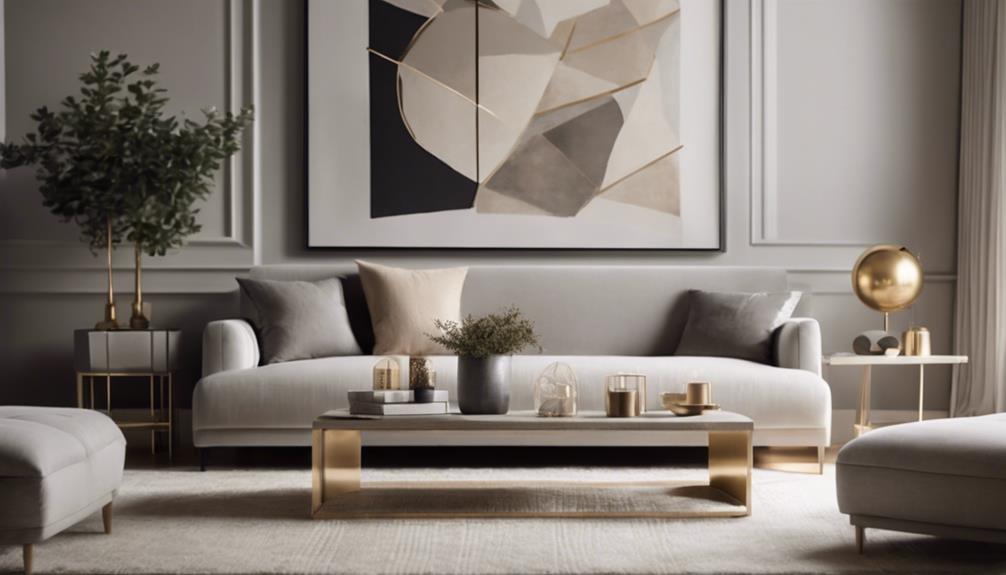
When evaluating your color palette for home decor, it's crucial to contemplate the harmony of your chosen color scheme. Personalized color choices that resonate with you can establish a space that feels uniquely yours.
Additionally, be mindful of how lighting can impact the colors in your room, as it can significantly alter their appearance and ambiance.
Color Scheme Harmony
Evaluating your color palette involves identifying the hues that naturally attract your attention when contemplating your home decor style. By harmonizing your color scheme, you can create a cohesive and visually pleasing atmosphere in your living space.
Understanding color psychology plays a significant role in selecting colors that evoke the desired emotions and ambiance. Balancing warm and cool tones in your color palette adds depth and interest to your home decor.
Strategic incorporation of accent colors can highlight key elements and create focal points in your design. When choosing colors for your space, consider how they interact with each other to achieve a harmonious and balanced look that reflects your personal style and creates the desired mood in your home.
Personalized Color Choices
Assess your color preferences by observing the hues that naturally draw your attention in your everyday surroundings and wardrobe. To create the right mood in your spaces, consider the emotions different colors evoke and how they can impact your home decor.
- Color Preferences: Take note of the colors you're naturally drawn to in your wardrobe and surroundings.
- Mood Creation: Choose colors that align with the mood you want to create in each space, whether it's calming blues or energizing yellows.
- Color Psychology: Explore how different hues can affect emotions and behaviors in your home.
Impact of Lighting
To understand how lighting impacts your color palette, consider the essential role it plays in setting the mood and ambiance of your room. Different lighting options can greatly influence how colors in your home decor style are perceived. Natural light can enhance the vibrancy of colors, while warm artificial light creates a cozy atmosphere. Cool lighting tones make colors appear crisper and more vibrant. Proper lighting not only affects color perception but also highlights specific decor elements, contributing to the overall aesthetic of your home decor style.
| Lighting Impact on Color Palette |
|---|
| Natural light enhances vibrancy |
| Warm light creates a cozy feel |
| Cool tones make colors crisp |
| Highlights decor elements |
| Contributes to aesthetic |
Embracing Minimalism in Decor

Embrace the essence of simplicity and tranquility with minimalist decor in your home. Minimalism in decor encourages decluttering spaces, focusing on functionality and intentional design choices.
Here are a few tips to help you embrace minimalism:
- Simplify Your Space: Opt for clean lines and a 'less is more' approach to design. Keep only the essentials and donate or store items that don't serve a purpose.
- Choose Neutral Colors: Incorporate a neutral color palette to create a sense of calm and openness in your living space. Whites, grays, and earth tones work well in minimalist decor.
- Mindful Furniture Selection: Select furniture pieces that are both functional and aesthetically pleasing. Look for pieces with simple designs and multifunctional uses to maintain a clutter-free environment.
Incorporating Natural Elements
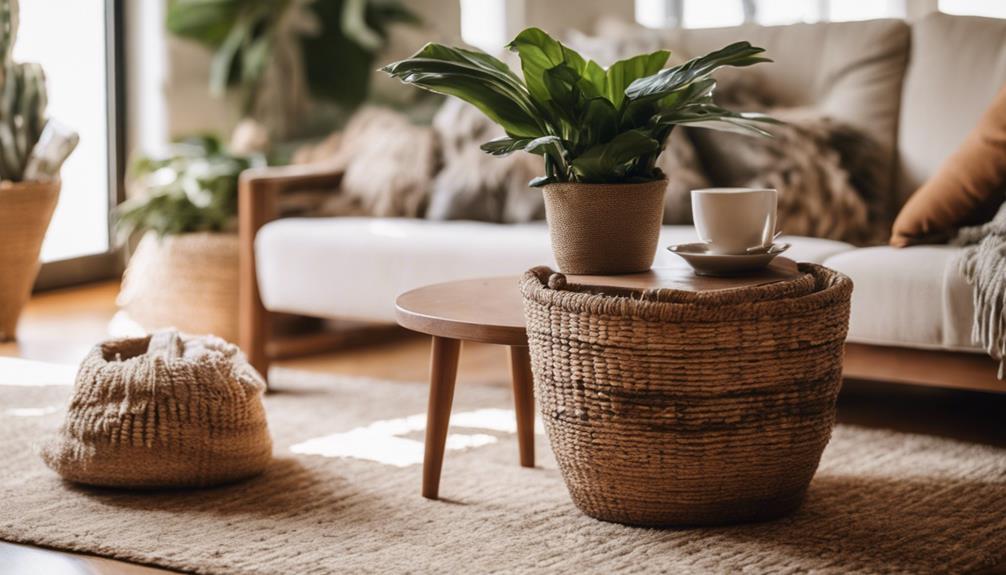
When it comes to decorating your home, incorporating natural elements like wood, stone, and plants can bring warmth and texture to your living space. These elements not only add a touch of tranquility but also create a connection to the outdoors within your home.
Earthy Textures and Tones
Incorporate natural elements like wood, stone, and plants into your home decor to infuse a warm and inviting atmosphere with earthy textures and tones. These elements create a cozy and rustic ambiance, connecting you to the beauty of nature within the comfort of your home.
To achieve this style, consider the following:
- Wood: Incorporate wooden furniture, accents, or even wooden wall art to bring a sense of warmth and organic charm.
- Stone: Utilize stone elements like a fireplace surround, countertops, or decorative pebbles to add a touch of natural elegance.
- Plants: Introduce houseplants or succulents to bring life and freshness to your space while enhancing the earthy aesthetic.
Bringing in Greenery
Adding greenery to your living space can effortlessly enhance the overall ambiance and bring a touch of nature indoors. Greenery is a versatile element that not only beautifies your home but also offers health benefits. Plants can boost air quality and reduce stress levels in indoor environments.
When considering decorating ideas with greenery, choose plants like succulents, ferns, or snake plants that suit your care abilities. Get creative with how you display them – plant stands, hanging planters, and wall-mounted pots are excellent options.
Greenery can complement various decor styles, from modern to bohemian, adding visual interest and texture to your space. Embrace the natural beauty and vibrancy that greenery brings to your home decor.
Wood Accents and Finishes
To further enhance the natural ambiance in your living space, consider incorporating wood accents and finishes for a touch of warmth and organic beauty. Wood elements bring texture and coziness to your interior design, fostering a welcoming atmosphere. Here are a few tips to make the most of wood accents:
- Mix wood finishes with other materials like metal or glass for a harmonious balance.
- Explore the versatility of wood tones, from light to dark, to match various color schemes.
- Incorporate wood through furniture, flooring, or decor accessories for a timeless and elegant touch in any room.
Furniture Selection: Form and Function
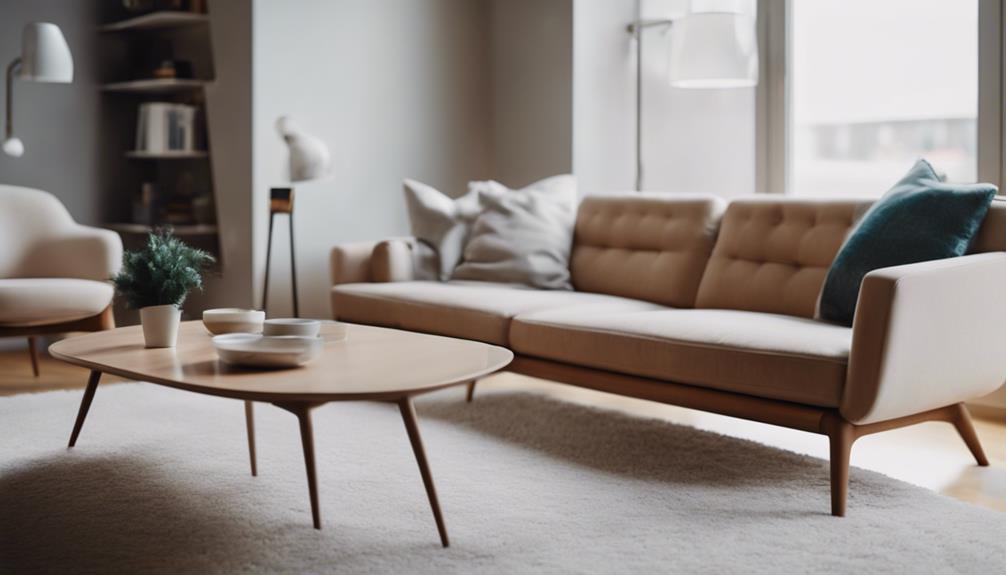
When choosing furniture for your space, make sure that both form and function are balanced harmoniously. Consider the size and layout of your room when selecting furniture pieces to guarantee they fit well and enhance the overall aesthetic.
Opt for versatile pieces that can serve multiple purposes, maximizing both comfort and practicality while maintaining a cohesive style. Mixing and matching furniture styles can create visual interest and add personality to your decor.
By prioritizing the balance between form and function, you can achieve a space that isn't only visually appealing but also highly functional. Remember to choose furniture that complements the existing elements in the room and reflects your personal style preferences.
Balancing these aspects will help you create a space that's both inviting and practical, tailored to your needs and preferences.
Personalizing With Decorative Accents
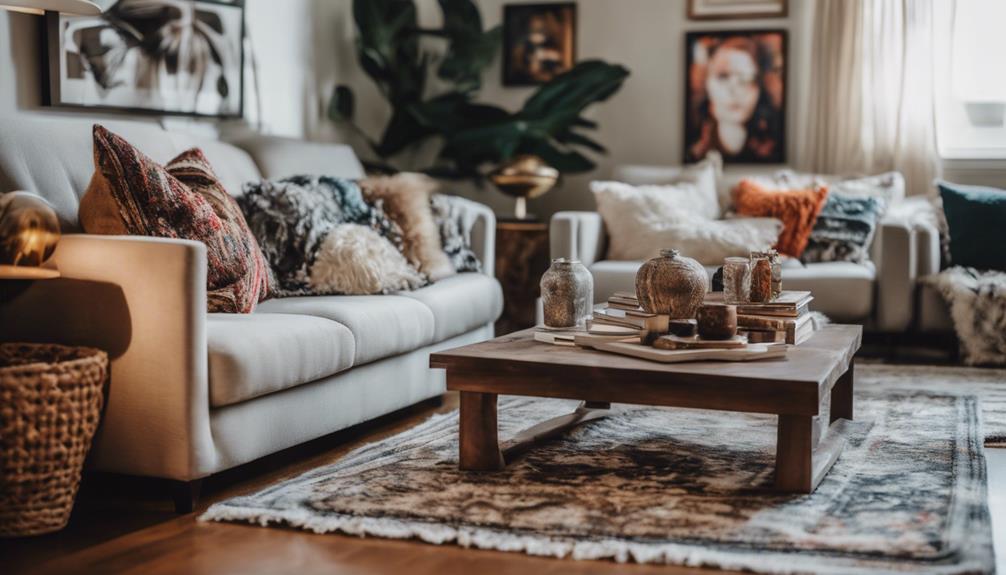
Personalize your space with decorative accents that showcase your unique style and interests. When it comes to finding the right decor pieces, consider the following:
- Mix and Match: Incorporate a variety of textures, colors, and shapes to add visual interest to your space. Mix sleek metallic finishes with cozy textiles or combine bold patterns with solid colors for a dynamic look.
- Unique Pieces: Look for one-of-a-kind items like artwork, sculptures, or plants that resonate with your personality. These unique accents will tie your space together and make it feel truly yours.
- Create a Cohesive Style: Make sure that your decorative accents tie the room together by selecting pieces that complement each other. Consider the overall color scheme, theme, or mood you want to achieve to create a cohesive and harmonious look throughout your space.
Creating a Cozy and Inviting Atmosphere
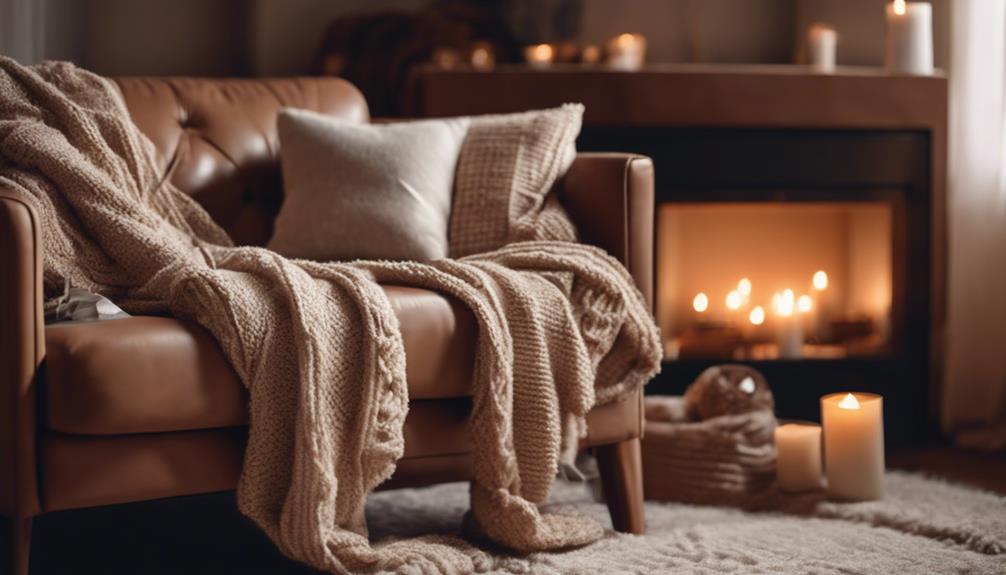
For a cozy and inviting atmosphere, incorporate warm colors like earth tones and soft neutrals. These hues create a sense of warmth and comfort in your space, making it feel more inviting and relaxing.
Add layers of texture with throws, pillows, and rugs to enhance the coziness factor. These elements not only provide physical comfort but also visually enrich the room.
To further enhance the ambiance, consider using soft lighting such as lamps and candles. This gentle lighting adds to the warmth and creates a soothing atmosphere.
Including natural elements like wood, plants, and woven materials can also contribute to a sense of tranquility and relaxation.
Personalizing your space with family photos, meaningful artwork, and sentimental decor items can make it feel more welcoming and homely, adding a personal touch to the cozy atmosphere you're creating.
Balancing Trends With Timelessness
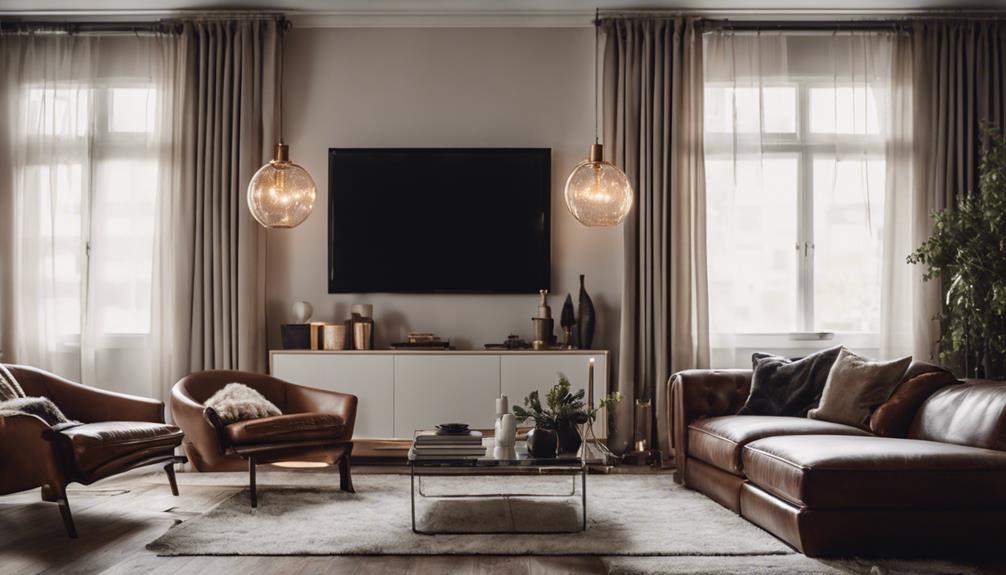
Wondering how to achieve a harmonious blend of contemporary trends and timeless designs in your home decor? Balancing trends with timelessness is key to creating a space that feels both current and enduring. Here are a few tips to help you strike the right balance:
- Mix Trendy Pieces with Timeless Classics: Incorporate trendy elements like bold colors or patterns alongside timeless staples like neutral furniture or classic artwork.
- Blend Modern Trends with Timeless Pieces: Combine modern decor trends such as minimalist design or industrial touches with timeless elements like vintage pieces or traditional accents.
- Ensure Longevity and Relevance: By balancing trends with timelessness, you can create a decor style that remains stylish and relevant for years to come, reflecting your unique style preferences without dating quickly.
Bringing It All Together: Your Unique Style
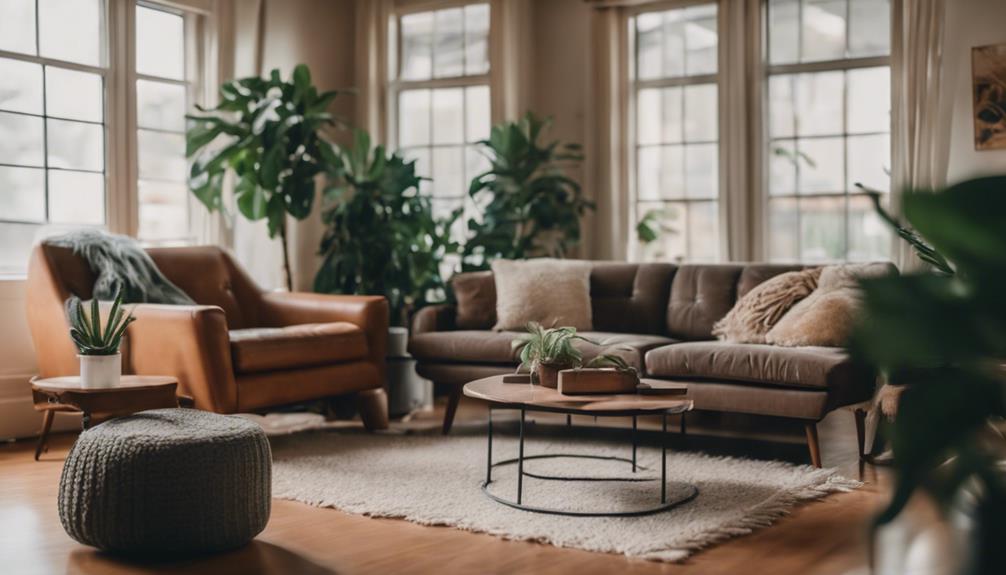
To unify your home decor style and reflect your individuality, start by identifying key elements that resonate with you. Assess your preferences, lifestyle, and existing decor to pinpoint what truly speaks to you.
Create a mood board or Pinterest board where you can visually compile all your design inspirations. Think about the atmosphere you want to create in your space; this will help guide your style choices and guarantee a cohesive look. Look for common threads among your favorite decor items – whether it's a color palette, a specific texture, or a recurring pattern – these elements will define your personal style.
Don't forget to utilize feedback, such as the results from an interior design style quiz, to enhance and refine your home decor style. These quiz results can provide valuable insights into your preferences and help you better understand what truly resonates with you.
Frequently Asked Questions
How Do I Find My Decorating Style?
To find your decorating style, start by evaluating your current decor and noting what you like and dislike. Consider your lifestyle, habits, and how you use each space to define your preferences. Set a budget and prioritize key areas for design.
Research different styles and elements to see what resonates with you. Experiment with mixing elements from various styles to create a cohesive and personalized look for your home.
How Do I Know What Style I Like in My House?
To determine what style you like in your house, start by evaluating your current decor. Note what you enjoy and what you don't. Consider your lifestyle and how you use each space.
Define your decorating budget and research different design styles. Experiment with mixing elements to create a unique look that reflects your personality. By aligning functionality with your preferences, you'll discover the perfect decor style that suits you.
How Do I Choose an Interior Style for My House?
To choose an interior style for your house, start by considering your lifestyle, preferences, and the atmosphere you want to create. Look for inspiration in magazines, online platforms, and home decor stores. Identify key elements like color schemes and furniture styles that appeal to you.
Experiment with creating mood boards. Seek feedback from others to help narrow down your choices. By exploring different styles, you'll find what resonates with you and create a space you love.
What Is the Most Popular Home Décor Style?
When it comes to popular home décor styles, Modern, Scandinavian, Farmhouse, Industrial, and Bohemian are at the forefront.
Each style offers its unique charm and appeal. Modern design boasts sleek lines and a minimalist approach. Scandinavian style focuses on simplicity and natural elements. Farmhouse décor brings rustic charm and vintage accents. Industrial design features raw materials and an urban aesthetic. Bohemian style embraces eclectic and free-spirited vibes, making it a popular choice for many.
How Can I Determine My Preferred Home Decor Style?
Determining your preferred home decor style is a personal journey. Start by exploring different styles such as modern, bohemian, or farmhouse to see what resonates with you. Pay attention to colors, textures, and furniture types that you’re drawn to. With time, you’ll be able to transform your space with decor that reflects your unique style.
Conclusion
As you reflect on your preferences, assess your color palette, embrace minimalism, incorporate natural elements, select furniture for form and function, and create a cozy atmosphere.
Personalize with decorative accents, balance trends with timelessness, and bring it all together to showcase your unique style.
By following these steps, you can create a home decor style that reflects your personality and creates a welcoming and inviting atmosphere for you and your guests.
Start exploring and experimenting with different elements to find what truly speaks to you.
Lighting
Understanding Integrated LED Lighting
Open up to the world of integrated LED lighting and discover the illuminating benefits that will revolutionize your space.
Integrated LED lighting offers a flexible solution for efficient lighting. With a lifespan of over 30,000 hours and energy-saving benefits, it is a sustainable choice. The directional light output improves aesthetics and reduces energy wastage. Smart controls allow for customized lighting experiences. Brands like Heals even provide a five-year guarantee on their products. The design flexibility and eco-friendly aspects make integrated LEDs perfect for different settings. To learn more about integrated LED lighting, discover the advantages, design benefits, and environmental impact to make an informed decision for your lighting requirements.
Key Takeaways
- Integrated LED lighting offers longer lifespan of over 30,000 hours.
- It provides energy efficiency and smart controls for customized lighting.
- Design versatility allows for creative possibilities and aesthetic appeal.
- Replaceable modules extend the lifespan of fixtures.
- Integrated LED lighting is a sustainable and eco-friendly lighting solution.
Benefits of Integrated LED Lighting
Integrated LED lighting provides numerous advantages for both residential and commercial spaces. One key benefit is the longer lifespan of over 30,000 hours, which greatly reduces the need for frequent replacements, saving both time and money in the long run. In addition to longevity, these fixtures offer cost-effective solutions due to their energy efficiency, consuming less power while providing ample illumination.
Moreover, integrated LED lights come with smart controls, allowing users to customize the light output and ambiance according to their preferences. This feature not only enhances user experience but also contributes to energy savings by optimizing lighting based on specific needs.
Additionally, the design versatility of integrated LED fixtures opens up a world of creative possibilities for lighting design, as their uni-directional light output can be utilized in various setups to enhance aesthetic appeal.
Energy Efficiency of Integrated LEDs

With their superior energy efficiency, integrated LED lighting fixtures outperform traditional lighting sources in power consumption. Integrated LEDs consume less power, making them highly energy efficient compared to incandescent or fluorescent lights. Additionally, integrated LEDs have a longer lifespan of over 30,000 hours, reducing the need for frequent replacements and maintenance, further enhancing their energy efficiency. The directional light output of integrated LEDs minimizes energy wastage by focusing the light where it's needed, increasing illumination efficiency.
Moreover, integrated LED fixtures offer customization options for controlling light output, allowing users to adjust brightness levels and color temperatures. This customization contributes to energy conservation by enabling users to optimize lighting according to specific needs, further enhancing the energy efficiency of integrated LEDs. Furthermore, the eco-friendly nature of integrated LED lighting reduces carbon footprint and promotes sustainable lighting solutions, making them a greener choice for environmentally conscious consumers.
Design Advantages With Integrated LEDS

Integrated LED lighting presents sleek design integration opportunities, offering a blend of form and function in various settings. This energy-efficient lighting solution not only enhances aesthetics but also provides seamless illumination integration for a modern look.
Designers can leverage the versatility of integrated LEDs to create innovative and visually appealing lighting fixtures that cater to diverse design needs.
Sleek Design Integration
Sleekly designed fixtures incorporating LED lighting offer a modern and sophisticated aesthetic to various spaces.
Integrated LED lights seamlessly blend into fixtures, providing a streamlined and minimalistic appearance that enhances the overall design.
These fixtures not only look visually appealing but also offer creative freedom and versatility in lighting design.
The sleek integration of LEDs allows for a contemporary touch, making them a popular choice for those seeking a modern look.
With their ability to deliver a seamless and sophisticated lighting solution, integrated LED fixtures have become a go-to option for many designers looking to create a stylish and visually pleasing environment.
Energy-Efficient Lighting Solution
Embracing integrated LED lighting in designs presents a compelling advantage in energy efficiency. Integrated LED fixtures consume less energy compared to traditional lighting options, contributing to reduced electricity bills and environmental impact.
LED Lighting Fixtures also last longer, with a lifespan exceeding 30,000 hours, reducing the frequency of replacements and maintenance costs. This longevity not only saves money but also minimizes waste.
Additionally, the energy-efficient nature of integrated LED lighting allows for the creation of versatile and aesthetically pleasing lighting designs, enhancing the overall ambiance of any space.
Seamless Illumination Integration
With seamless illumination integration, designers can achieve a contemporary and sophisticated look using LED lighting fixtures. Integrated LED fixtures seamlessly blend into various designs, offering energy efficiency and long-lasting performance for over 30,000 hours.
Designers have more creative freedom with integrated LEDs due to their versatile application in different settings. Smart control options further enhance the appeal of integrated LED lighting, allowing for customized light output and ambiance.
The integration of LED technology not only enhances aesthetics but also provides functional benefits in lighting designs. This seamless integration of LED fixtures not only elevates the visual appeal but also guarantees efficient and long-lasting illumination, making it a versatile and practical choice for modern lighting solutions.
Sustainability of Integrated LED Lighting

Integrated LED lighting offers significant sustainability benefits through its energy-efficient design, contributing to reduced energy consumption.
The longevity and reliability of integrated LEDs further enhance their sustainable profile, with extended lifespans of up to 30,000 hours.
Energy-Efficient Design Benefits
Opting for energy-efficient design benefits, integrated LED lighting stands out as a sustainable choice in modern lighting solutions.
- Integrated LED lighting is energy-efficient, consuming less power than traditional options.
- LED fixtures boast a longer lifespan, lasting up to 30,000 hours or more, reducing the need for frequent replacements.
- The sustainability of integrated LED lighting aids in environmental conservation by lowering energy consumption.
- Integrated LED designs offer eco-friendly lighting solutions that align with modern sustainability practices.
Longevity and Reliability
In addition, a key factor in the sustainability of integrated LED lighting is its remarkable longevity and reliability, with fixtures lasting over 30,000 hours. Integrated LED lights offer a longer lifespan compared to traditional lighting options, reducing the frequency of replacements needed.
The reliability of LED modules is evident as they can last up to 16 years with 5 hours of daily use, showcasing their durability. Brands like Tom Dixon contribute to sustainability efforts by offering replacement modules for LEDs, ensuring that the lighting systems can be easily maintained and extended.
The EU's ban on energy-wasting halogen bulbs in 2018 has further promoted the adoption of energy-efficient LED lighting, emphasizing the importance of longevity and reliability in sustainable lighting solutions.
Environmental Impact Reduction
Consuming less energy and boasting a longer lifespan, LED lighting greatly reduces its environmental impact. Here are some key points about the sustainability of integrated LED lighting:
- LED fixtures are eco-friendly with no mercury content, contributing to sustainability efforts.
- The efficiency of integrated LED lights helps in reducing carbon emissions and energy consumption.
- Sustainable design choices like integrated LED lighting promote energy conservation and reduce waste.
- Integrated LED fixtures offer a sustainable lighting solution with minimal environmental footprint.
Longevity of Integrated LEDs
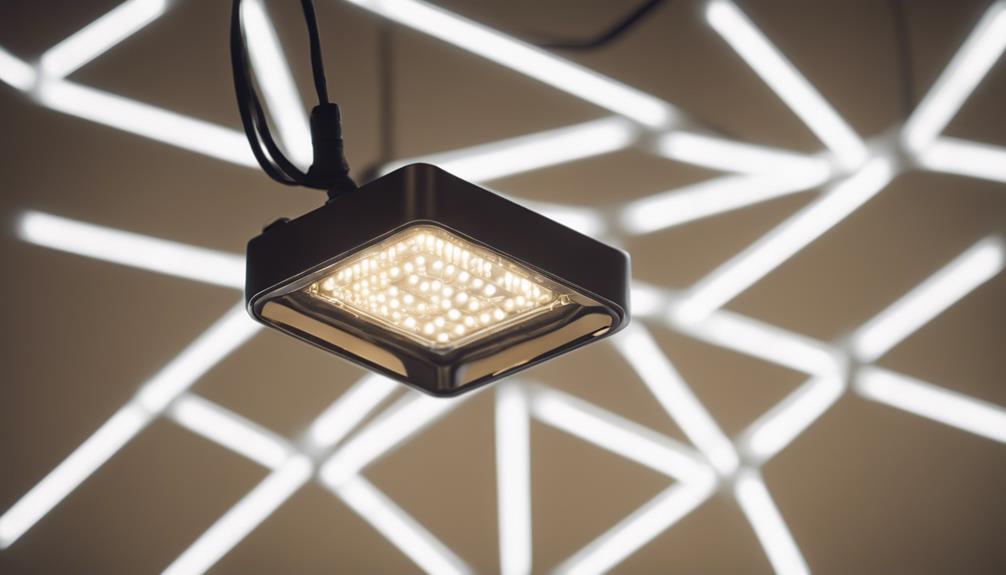
Integrated LEDs boast a longevity exceeding 30,000 hours, far surpassing the lifespan of traditional bulbs. This extended lifespan translates to approximately 16 years if used for an average of 5 hours per day.
While integrated LEDs are known for their durability, replacement may eventually be necessary after this extensive period. Some brands, like Tom Dixon, offer replaceable modules for their integrated LED fixtures, providing an option for continued use beyond the initial lifespan.
Additionally, companies such as Heals stand behind the longevity of their integrated LEDs by offering a five-year guarantee on their products. This assurance not only underscores the reliability of integrated LEDs but also gives consumers peace of mind regarding the longevity of their lighting fixtures.
As technology continues to advance, the lifespan of integrated LEDs is expected to improve even further, ensuring that they remain a long-lasting and energy-efficient lighting solution for years to come.
Control Options for Integrated LEDs

Integrated LED lighting offers a range of control options to customize the ambiance and brightness of the fixtures. Dimming capabilities can vary between different manufacturers, influencing the flexibility of the lighting output.
Some integrated LED fixtures are equipped with advanced control systems that enable personalized lighting experiences.
Dimming Capabilities
With a range of dimming options available, users can easily customize the light output of integrated LED fixtures to suit their preferences and create various atmospheres in a space.
Integrated LED fixtures offer dimming capabilities for customizable light output.
Dimming options for integrated LEDs vary among manufacturers and models.
Some integrated LED fixtures come with built-in dimmers for easy control.
Dimming integrated LEDs can help create different moods and ambiance in a space.
Color Temperature Adjustment
Users can easily adjust the color temperature of integrated LED lighting to create diverse atmospheres according to their preferences and needs. Integrated LED fixtures offer the flexibility of customization, allowing individuals to tailor the light output to suit different settings.
With control options such as dimmers, smart controls, and color-changing features, these fixtures provide versatile lighting solutions for various spaces. Whether one prefers a warm, cool, or daylight color temperature, integrated LED fixtures can effortlessly switch between options.
Additionally, some systems come with preset modes designed for specific activities like reading, relaxing, or entertaining, enhancing the ambiance of the environment. Color temperature adjustment in integrated LED lighting fixtures plays an important role in optimizing both the atmosphere and functionality of a space.
Environmental Impact of Integrated LEDs

Boasting a lifespan exceeding 30,000 hours, integrated LEDs greatly reduce the frequency of replacements and contribute to minimizing waste, thereby lessening their environmental impact.
- The energy efficiency of integrated LEDs decreases power consumption, leading to a lower environmental impact compared to traditional lighting sources.
- Integrated LED fixtures serve as a sustainable lighting solution by reducing overall energy usage and cutting down on carbon emissions.
- Brands offering replacement modules for integrated LEDs support longer product lifecycles, enhancing sustainability efforts within the lighting industry.
- Integrating LED technology into fixtures aligns with eco-friendly initiatives, promoting environmental consciousness by reducing energy waste.
Installation Considerations for Integrated LEDs
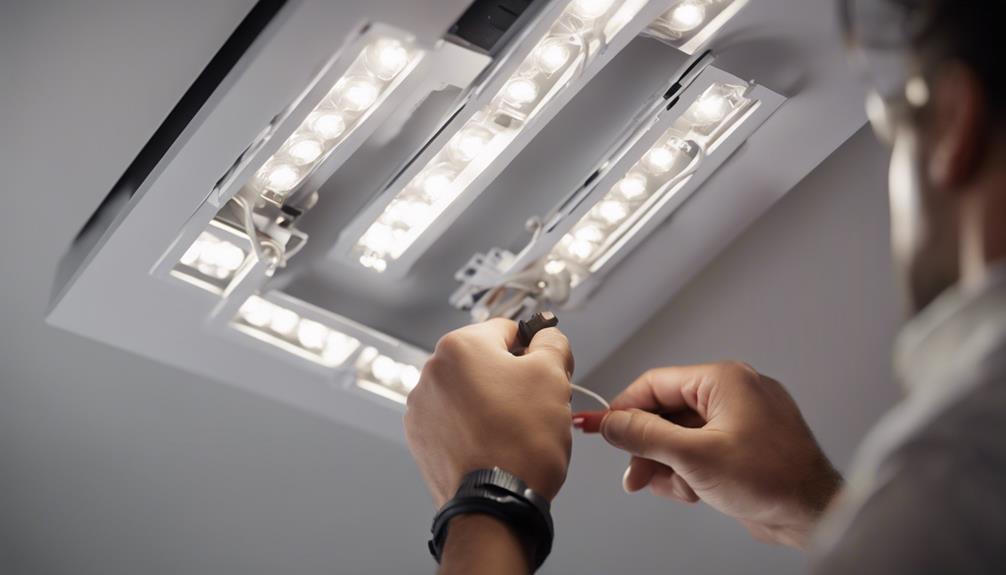
Integrated LED fixtures require careful consideration during installation to guarantee peak performance and longevity. These energy-efficient lighting solutions are designed to be installed directly into electrical systems, ensuring efficient light production. With a longer lifespan exceeding 30,000 hours, integrated LEDs greatly reduce the need for frequent replacements, making them a cost-effective lighting option. Additionally, their versatile design options allow for enhanced aesthetics in various fixtures, providing both functional and decorative benefits.
One of the key advantages of integrated LED fixtures is the availability of smart control options. This feature enables users to customize light output and ambiance according to their preferences, adding a layer of convenience and flexibility to the lighting setup. By incorporating smart controls, users can optimize energy consumption and create different lighting moods for various occasions.
Versatility in Integrated LED Applications
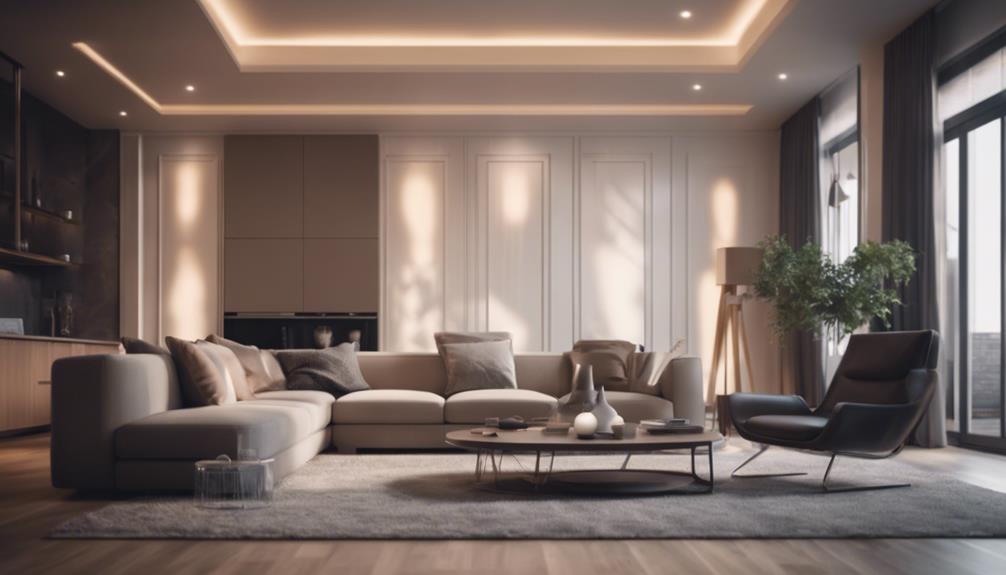
With its adaptability across various settings, integrated LED lighting showcases unmatched versatility in diverse applications like office, high bay, and decorative lighting. Integrated LED fixtures offer a range of benefits that make them ideal for specific lighting needs:
- Energy-efficient: Integrated LED lights consume less energy compared to traditional lighting options, resulting in cost savings and reduced environmental impact.
- Long-lasting: With a lifespan of up to 50,000 hours, integrated LED fixtures provide long-term illumination, reducing maintenance costs and the need for frequent bulb replacements.
- Versatile: Integrated LED lights come in various shapes, sizes, and designs, making them suitable for a wide range of residential and commercial spaces, including pendant lights for decorative purposes.
- Ideal for specific lighting needs: The directional light emitted by integrated LED fixtures makes them perfect for highlighting specific areas or meeting unique design requirements.
The adaptability and efficiency of integrated LED lighting make them a top choice for modern lighting solutions in different settings.
Integrated LED Vs Traditional Lighting
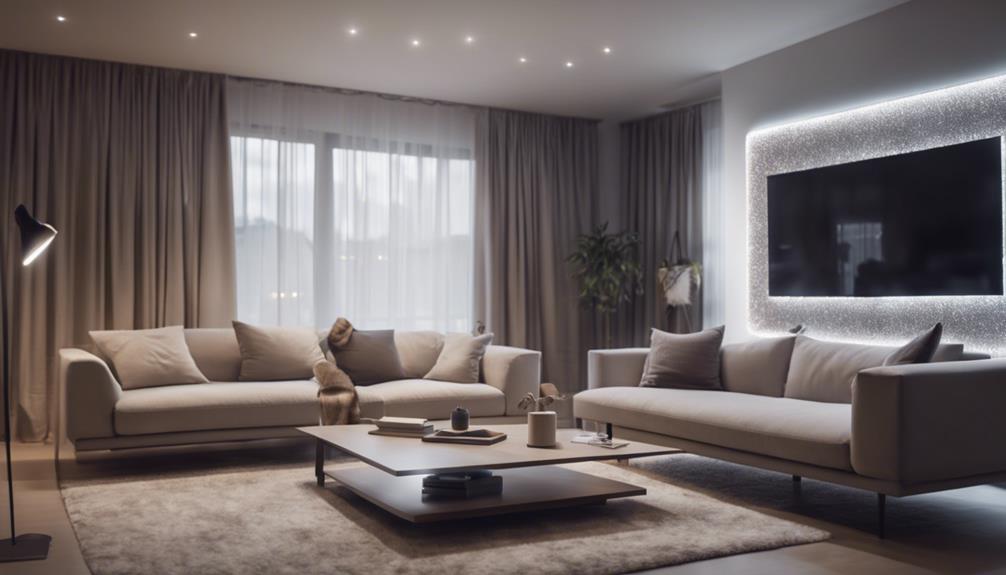
In modern lighting comparisons, integrated LED fixtures outshine traditional lighting options with their superior efficiency and longevity.
Integrated LED lighting combines LED diodes in a fixture, providing fuller and purer light output compared to traditional incandescent bulbs. LED technology enables integrated LEDs to offer energy-efficient uni-directional lighting, unlike the omni-directional light produced by traditional sources. These fixtures are directly connected to electrical systems, ensuring streamlined energy usage and light production.
Integrated LED lights also boast a longer lifespan of over 30,000 hours, reducing the need for frequent bulb replacements common in traditional lighting fixtures. Additionally, the design of integrated LED lighting enhances aesthetics in various fixtures, offering versatility in both design and performance. Whether for ambient lighting or task lighting, integrated LED fixtures prove to be a more efficient and durable choice compared to traditional lighting options.
Frequently Asked Questions
How Do Integrated LED Lights Work?
Integrated LED lights work by combining LED diodes within the fixture, removing the need for separate bulbs. They connect directly to electrical systems, delivering efficient and streamlined light.
These lights offer versatility in design and performance, improving the fixture's aesthetics. With a lifespan exceeding 30,000 hours, they reduce the frequency of replacements.
Smart controls can be integrated for customized lighting, making them a convenient and energy-efficient choice.
What Is Better, LED or Integrated Led?
LED lighting is more efficient and durable than traditional lighting sources. Integrated LED fixtures offer a convenient and streamlined design with the diodes built into the unit. This design reduces maintenance and replacement costs.
While singular LED lights are versatile, integrated LED fixtures provide a complete lighting solution with enhanced performance. Overall, the choice between LED and integrated LED depends on specific needs for efficiency, convenience, and longevity.
Can You Change the Bulb in an Integrated LED Light?
Integrated LED lights typically don't have replaceable bulbs, as the LED diodes are integrated into the fixture. In some cases, the entire LED module or board may be replaceable if it fails.
When the LEDs reach the end of their long lifespan, the entire fixture might need replacement. It's important to review the manufacturer's specifications and warranty to determine the replaceability of integrated LED components.
What Happens When an Integrated LED Goes Out?
When an integrated LED goes out, it typically requires replacing the entire fixture. Some brands offer replacement modules for easier maintenance. Integrated LEDs generally have a longer lifespan, lasting up to 30,000 hours.
Replacement may be necessary after years of use, around 16 years with 5 hours of daily use. Brands like Heals provide guarantees on their integrated LEDs, ensuring longevity and performance for consumers.
Conclusion
To sum up, integrated LED lighting offers numerous benefits such as:
- Energy efficiency
- Design advantages
- Sustainability
- Longevity
- Versatility in applications
While some may argue that the initial cost of integrated LEDs is higher than traditional lighting options, the long-term savings in energy consumption and maintenance costs make them a more cost-effective and environmentally friendly choice in the long run.
Consider the many advantages of integrated LED lighting when making your next lighting decision.
Home Decor
What Happened to Plt Home Decor
Discover why PLT Home Decor was discontinued as the brand shifted focus, leaving customers seeking new decor sources and prompting potential reconsideration.
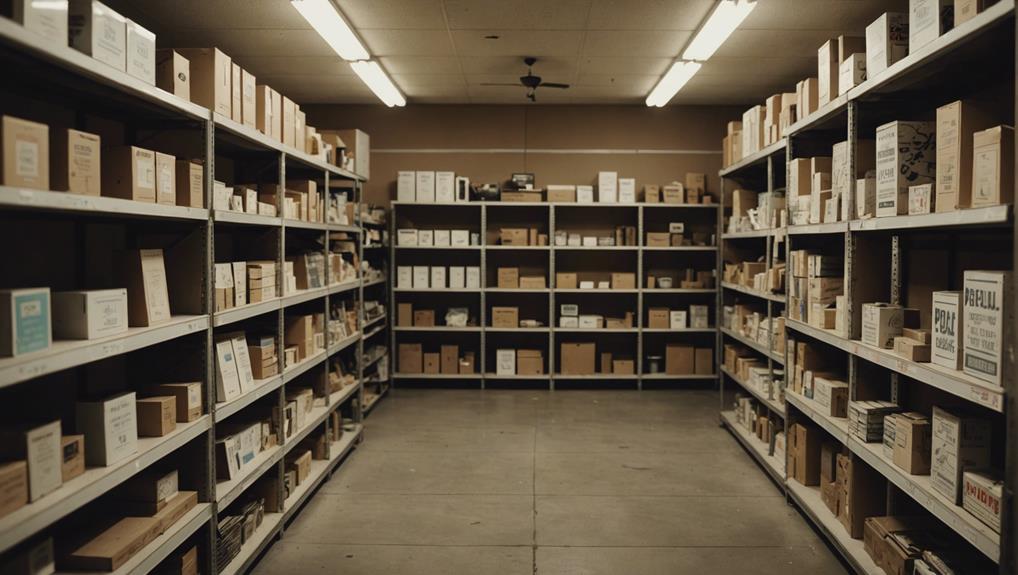
PLT Home Decor was phased out as the brand sharpened its focus on its core fashion business, striving to improve its trendy clothing options and fashion shopping experience. This transition led home decor enthusiasts to search for alternative sources to meet their style preferences. Although the decision to discontinue the home decor line may have upset some customers, it encouraged them to discover new retailers and online platforms offering a variety of decor styles. The brand’s strategic shift led to a more defined fashion identity and increased customer engagement. Feedback from customers emphasized the void created by the absence of home decor products, suggesting a possible reconsideration for their reintroduction.
Key Takeaways
- PLT discontinued home decor to focus on core fashion business.
- Streamlined product offerings to enhance fashion shopping experience.
- Impact on home decor enthusiasts led to seeking new decor sources.
- Customers left disappointed with the void in brand's range.
- Potential consideration for reintroducing home decor items based on feedback.
PLT Home Decor Discontinuation Reason
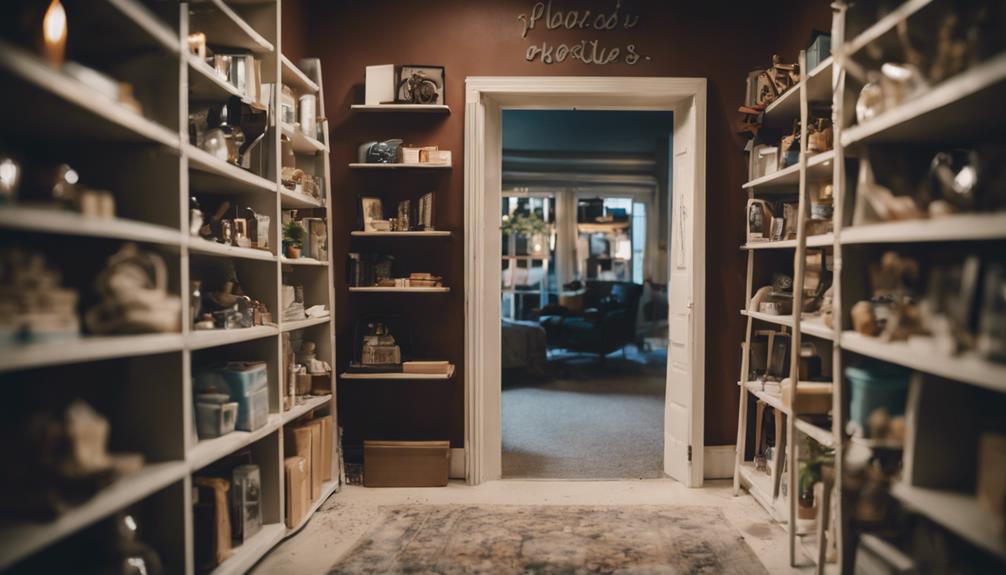
The primary reason PLT decided to discontinue their home decor line was to refocus on their core fashion business. By streamlining their product offerings and enhancing the fashion shopping experience, PLT aims to concentrate solely on providing trendy and stylish clothing options for their customers.
Now, when you visit the PLT website, you'll exclusively find a wide array of fashion items to choose from, catering to your style needs.
This strategic decision to discontinue the home decor line aligns perfectly with PLT's commitment to offering fashion-forward designs. By reallocating their resources and energy towards their core business, PLT can guarantee that they're at the forefront of the fashion industry, meeting the evolving needs and preferences of their fashion-savvy clientele. This move not only allows PLT to stay true to its fashion roots but also positions them as a go-to destination for all things trendy and chic in the world of fashion.
Impact on Home Decor Enthusiasts
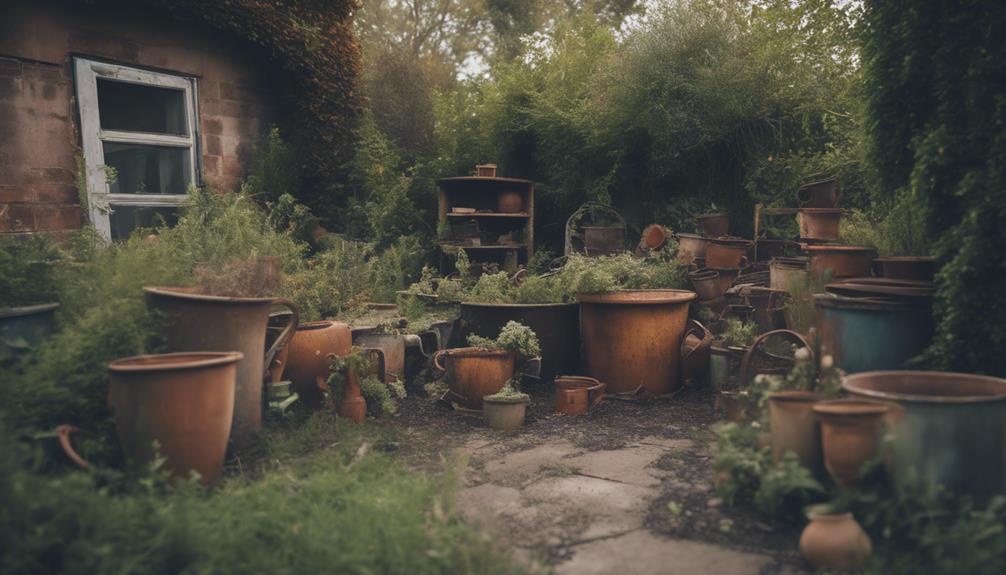
With PLT's home decor line now discontinued, home decor enthusiasts will need to seek out new sources for trendy and affordable decor items. The absence of PLT's offerings may leave a gap in your decorating options, but there are still plenty of alternatives available.
Here's what you can do:
- Explore other retailers to discover similar products that match your style and budget.
- Consider shopping online for a wider selection of home decor items from various brands.
- Attend local home decor stores or markets to find unique pieces that can add a personal touch to your space.
- Keep an eye out for emerging home decor brands that might offer fresh and innovative designs to elevate your home decor game.
While the discontinuation of PLT's home decor line may require some adjustment, it also presents an opportunity to diversify your decor sources and explore new trends in the home decor world.
Alternative Home Decor Retailers
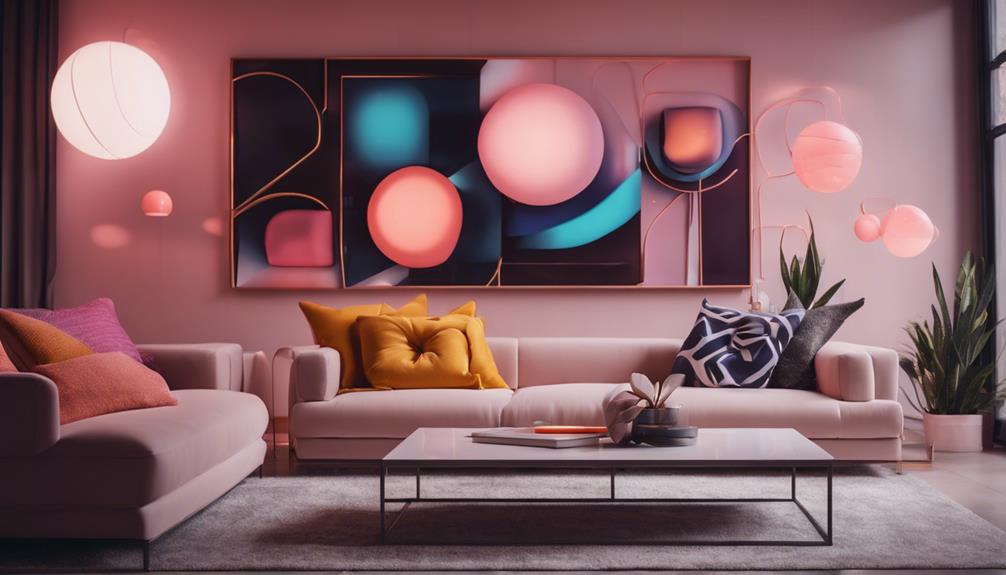
Discover a myriad of unique and trendy decor options at alternative home decor retailers beyond PLT. These retailers offer a diverse array of styles and aesthetics from various brands and designers, providing you with endless opportunities to personalize your living space.
Whether you're looking for specific themes, color schemes, or design preferences, alternative home decor retailers cater to a wide range of tastes. By exploring these options, you can find decor pieces that truly reflect your individual style and bring a touch of creativity to your home environment.
From minimalist Scandinavian designs to bohemian chic accents, there's something for everyone in the world of alternative home decor retailers. So, take the opportunity to shop around, discover new and exciting pieces, and transform your living space into a unique reflection of your personality and taste.
Brand Strategy Shift Analysis
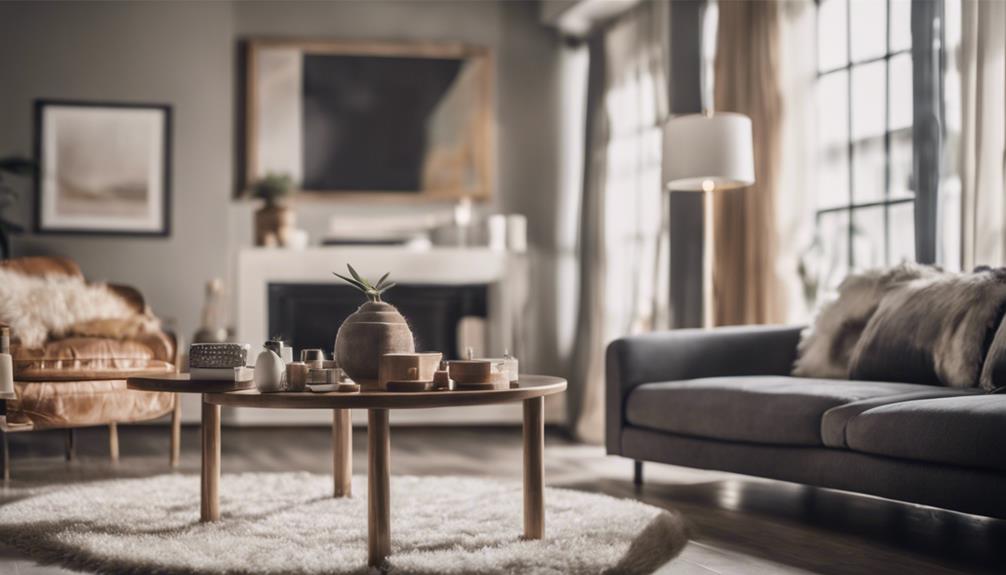
Explore how the brand strategy shift away from home decor to focus on fashion has impacted PrettyLittleThing's market positioning and customer engagement. PrettyLittleThing made a strategic decision to concentrate on their core fashion offerings, discontinuing home decor to streamline their product range and enhance their fashion collections. This shift aimed to prioritize and strengthen their fashion brand identity, aligning with their goal of providing trendy and affordable clothing options that meet the style needs of their target demographic.
The impact of this brand strategy shift can be seen in how PLT has repositioned itself in the market and engaged with customers:
- Streamlined Product Range: Focusing on fashion allowed PLT to streamline their offerings and concentrate on what they do best.
- Enhanced Fashion Collections: By shifting away from home decor, PLT was able to invest more in developing and expanding their fashion collections.
- Stronger Brand Identity: The decision to prioritize fashion has helped PLT strengthen its brand identity and market positioning.
- Targeted Customer Engagement: PLT's emphasis on fashion has resonated with customers looking for trendy and affordable clothing options.
Customer Feedback and Reactions
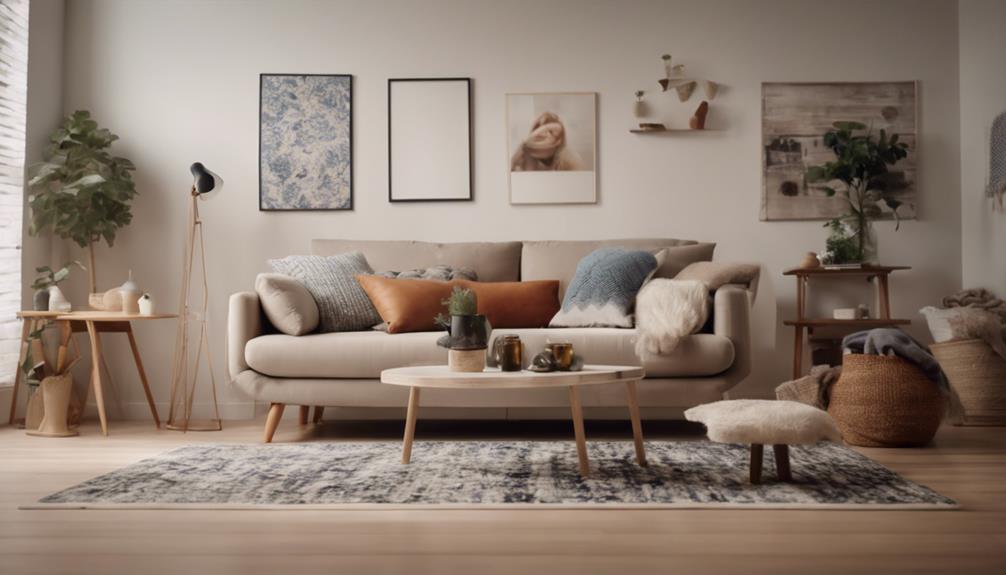
Customers have expressed disappointment over the discontinuation of PLT home decor items, highlighting the gap in the brand's offerings for interior design enthusiasts. Many fans of the brand enjoyed the unique and trendy home decor pieces that PLT used to offer.
Some customers have voiced their hopes for a return of home decor options in the future to complement PLT's fashion line. The absence of home decor products has left a noticeable void in the brand's range for those looking to style their living spaces with PLT's aesthetic.
Considering the feedback and demand from customers, PLT may consider reintroducing home decor items to cater to this segment of their audience. The brand's decision to shift away from home decor has sparked reactions from loyal customers who valued the opportunity to extend their fashion sense into their homes.
As PLT evaluates its strategy, customer sentiments regarding the home decor offerings could play a pivotal role in shaping the brand's future direction.
Frequently Asked Questions
Where Is Prettylittlething Located in the Us?
PrettyLittleThing doesn't have physical stores in the US. Customers can shop online at the PrettyLittleThing website from any location. The brand offers international shipping to the US for online orders.
PrettyLittleThing may collaborate with US influencers for promotions and campaigns. US customers can access PrettyLittleThing's home decor items through the online store.
What Is the Meaning of Home Decor?
Home decor is the art of beautifying living spaces. It involves selecting and arranging furniture, accessories, and artwork to create a visually appealing environment. By mixing colors, textures, and patterns, individuals express their unique style. Incorporating decorative accents like rugs and plants transforms a house into a warm sanctuary.
One interesting statistic: The global home decor market is projected to reach $664 billion by 2027. It's an exciting and creative way to personalize your living space.
How Can I Incorporate African Home Decor into My Home Like Plt Home Decor Did?
Incorporating African home decor options into your home, like PLT Home Decor did, can bring a touch of vibrant culture. Add unique tribal art pieces, colorful textiles, and natural materials such as wood and rattan. Incorporate animal prints or an ethnic-inspired rug to infuse the space with African elegance.
Conclusion
To sum up, PLT Home Decor was discontinued due to a strategic shift in the brand's focus. This decision left many home decor enthusiasts searching for alternative retailers to fulfill their design needs.
Despite the disappointment, customers have expressed understanding of the brand's decision. As they navigate the changing landscape of home decor shopping, they're reminded that like a well-styled room, sometimes a fresh start is needed to create a space that truly reflects one's personality and style.
-

 Vetted7 months ago
Vetted7 months ago15 Best EMS Foot Massagers for Neuropathy to Soothe Your Feet
-

 Vetted7 months ago
Vetted7 months ago14 Best Personalized Father's Day Gifts for Your Husband – Show Him You Care
-

 Alfresco6 months ago
Alfresco6 months agoAlfresco Stacker Doors: Seamless Indoor-Outdoor Living!
-

 Tableware and Dining Accessories7 days ago
Tableware and Dining Accessories7 days agoWhat Is the Meaning of the Word Tableware
-
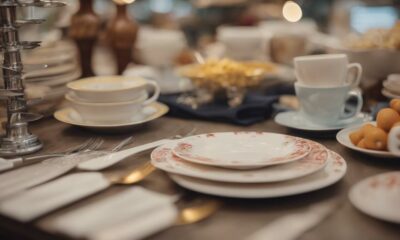
 Tableware and Dining Accessories7 days ago
Tableware and Dining Accessories7 days agoWhen Is Tableware on Sale at Hobby Lobby
-
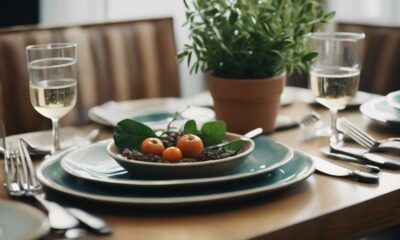
 Tableware and Dining Accessories7 days ago
Tableware and Dining Accessories7 days agoWhich of the Following Is Not Classified as Tableware
-

 Craft and Textiles8 months ago
Craft and Textiles8 months ago15 Best Places to Buy Appliances for Your Home – Top Retailers Reviewed
-
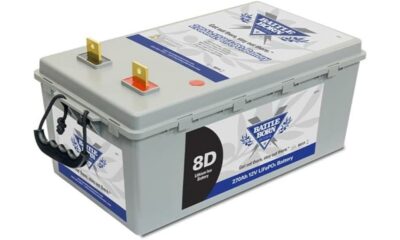
 Vetted6 months ago
Vetted6 months agoBattle Born Batteries Review: Reliable Power Solution






